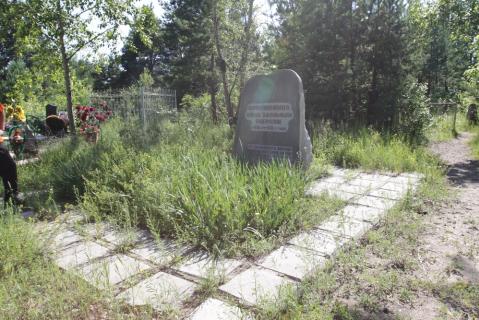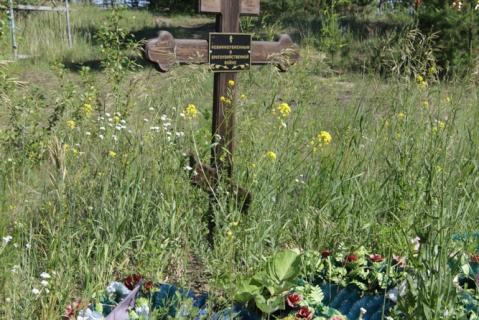The Bulyginskoe cemetery was opened in the early 19th century in the centre of Barnaul in the strip of woodland along the Pivovarka River. It goes under other names – the old city cemetery, Bulyginskoe or Kirovskoe after the Bulygin (or Kirov) settlement near which it is located.
During the 1941-1944 war Red Army soldiers who died in Barnaul’s military hospitals were buried here. In the 1940s and 1950s representatives of various nationalities exiled to the Altai Krai were also buried in the cemetery. In 1994 a monument was erected to the Kalmyks who died in exile in Barnaul: “Here lie Kalmyks who died in the 1940s and 1950s”, read the plaques, “from the Kalmyk nation and the inhabitants of Altai and Barnaul”. In December 2009 the remains of those executed in 1923 [22-04] were reburied in a common grave and a commemorative cross was erected there with the inscription, “The innocent victims of a fratricidal war”.
The voluntary youth brigade “Kindly Planet” conduct tours around the cemetery, restoring the lost information about the burials, preserve the monuments and have created a photo album describing the necropolis.
A Book in Remembrance of the Kalmyk Nation’s Deportation (3 vols. 12 books: 1993-2004) covers the years from 1944 to 1957. It consists of three volumes: 1. Deportation; 2. Life in Exile; and 3. Work, War and Return.
The Memorial online database (2025) lists 46,525 victims in the Altai Region (Krai; BR 45,668). See NKVD courtyard.
The database includes 25,580 Kalmyks who died after being deported at the end of 1943.
| State of burials | Area | Boundaries |
|---|---|---|
|
Individual burials have been partially preserved, the area of reburial is in good condition
|
52 hectares
|
delineated
|
[ original texts and hyperlinks ]
“The Bulyginskoe cemetery, Barnaul”, Virtual Museum of the Gulag [retrieved, 27 May 2022; no longer accessible]


